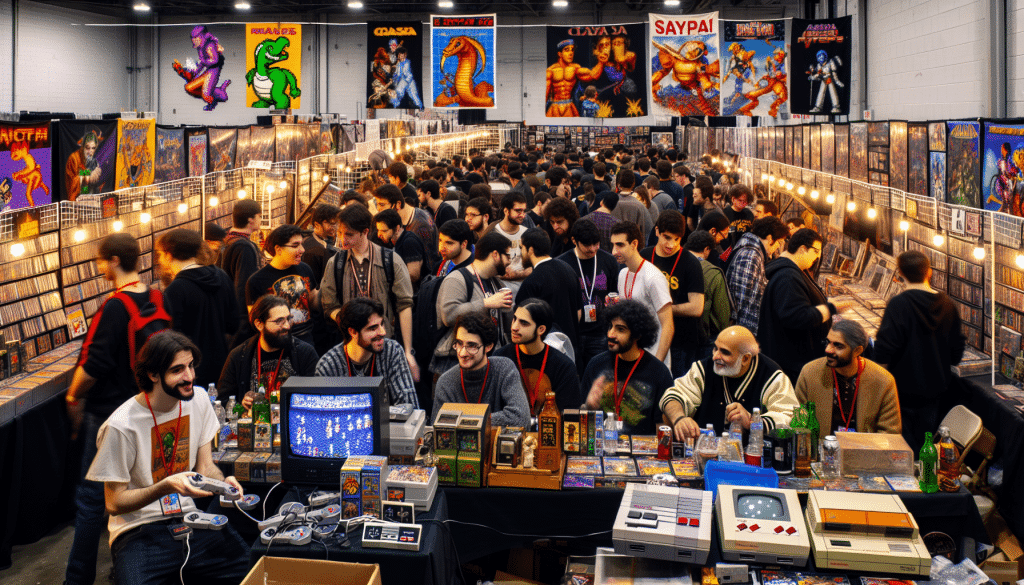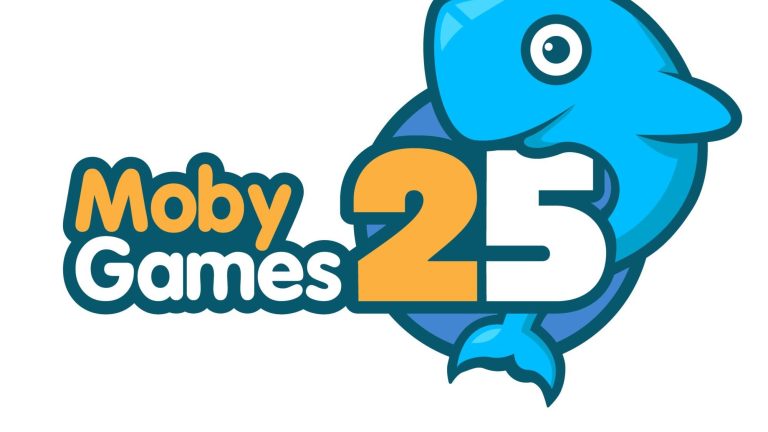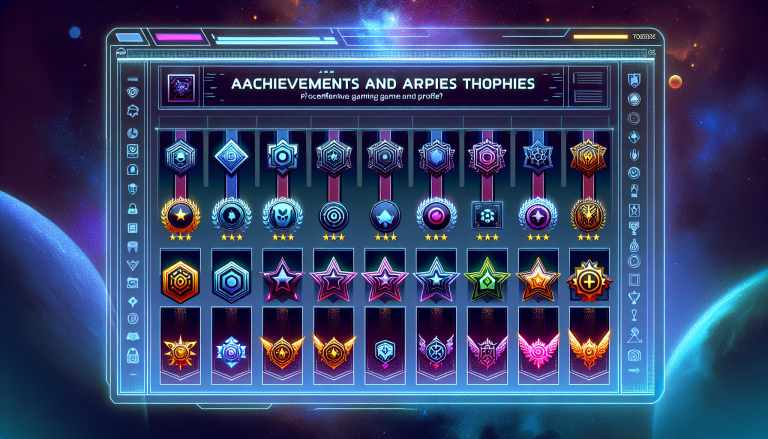Are you a fan of retro gaming? Do you long for the days of classic video games and want to relive those nostalgic moments? Well, you’re in luck! There are plenty of retro gaming platforms available that can help you satisfy your gaming cravings. But with so many options out there, how do you choose the right one? That’s where this guide comes in. We’ll walk you through the factors to consider when selecting a retro gaming platform, so you can make an informed decision and start playing your favorite games in no time!
1. Factors to Consider for Retro Gaming Platform Selection
When choosing a retro gaming platform, it’s important to take into account several factors that can greatly impact your gaming experience. Let’s dive into some of the key considerations:
Compatibility
One of the first things to think about is compatibility. You’ll want to make sure that the retro gaming platform you choose is compatible with the games you want to play. Some platforms specialize in certain consoles or game libraries, so it’s crucial to check if your favorite games are supported.
Additionally, you should also consider the compatibility of the platform with your hardware. Some retro gaming platforms require specific hardware requirements, such as a certain operating system or processor speed. Make sure to check the system requirements before making a decision.
User Interface and Experience
The user interface (UI) and user experience (UX) of a retro gaming platform can greatly impact your enjoyment. Look for a platform that has an intuitive and user-friendly interface, making it easy to navigate through menus, browse games, and customize settings. A visually appealing and responsive UI can also enhance your gaming experience.
Furthermore, consider the features and functionalities offered by the platform. Does it allow you to save and load game progress? Can you use cheat codes? Is there a multiplayer option? These features can greatly enhance your gaming experience, so it’s worth taking them into account.
Game Library
The game library is perhaps the most crucial factor to consider when choosing a retro gaming platform. After all, the whole purpose of diving into retro gaming is to play your favorite classic games! Make sure the platform offers a wide selection of games from various consoles and eras. Consider the genres, too, to ensure that your favorite types of games are available.
It’s also worth checking if the platform regularly updates its game library with new additions. This ensures that you’ll always have fresh content to explore and discover. Reading user reviews and recommendations can give you valuable insights into the quality and quantity of the games offered by a platform.
Cost and Pricing Model
Lastly, consider the cost and pricing model of the retro gaming platform. Some platforms offer a one-time purchase option, while others require a subscription or have in-app purchases. Think about your budget and determine which pricing model aligns with your needs and preferences.
It’s also important to weigh the value you’ll be getting for your money. Take into account factors such as the size of the game library, the frequency of updates, and the additional features offered by the platform. This will help you determine if the price is justified.
By considering these factors, you’ll be well on your way to selecting the perfect retro gaming platform for your gaming adventures. Take your time, do your research, and choose wisely. Happy gaming!
Evaluating Game Selection for Retro Gaming Platforms
Ah, the joys of retro gaming! There’s something truly special about revisiting the games of our past, immersing ourselves in pixelated nostalgia, and reliving those epic gaming moments. But before we can embark on this journey down memory lane, we need to carefully evaluate the game selection offered by various retro gaming platforms. After all, the games themselves are the heart and soul of the retro gaming experience. When it comes to evaluating game selection, it’s important to consider a few key factors. Let’s dive in and explore what you should look for when choosing a retro gaming platform. 1. Variety is the Spice of Gaming Life: One of the first things to consider is the breadth and depth of the game library. A good retro gaming platform should offer a wide range of games spanning different genres, consoles, and eras. Whether you’re into classic RPGs, 2D platformers, or old-school shooters, having a diverse selection ensures there’s something for everyone. 2. Classic Favorites and Hidden Gems: While having a variety of games is important, it’s equally crucial to have access to those beloved retro classics that defined an era. Look for platforms that offer iconic titles like Super Mario Bros., The Legend of Zelda, or Sonic the Hedgehog. Additionally, a great retro gaming platform will also provide opportunities to discover hidden gems – those lesser-known games that may have slipped under the radar but still offer incredible gameplay experiences. 3. Emulation Accuracy: When it comes to retro gaming, authenticity matters. A reputable retro gaming platform should strive for accurate emulation, faithfully recreating the experience of playing games on their original hardware. This includes replicating the graphics, sound, and overall feel of the original consoles. Pay attention to platforms that prioritize accuracy to ensure a truly authentic retro gaming experience. 4. Updates and Additions: As much as we love nostalgia, it’s also exciting to see new additions and updates to the retro gaming scene. Look for platforms that regularly add new games to their library, whether it’s through licensing agreements with original publishers or the creation of new indie titles inspired by the classics. This not only keeps things fresh but also provides a platform for emerging developers to showcase their talent. 5. User Reviews and Ratings: What better way to gauge the quality and appeal of a retro gaming platform than by hearing from fellow gamers? Take the time to read user reviews and ratings to get an idea of the overall satisfaction level and the specific strengths and weaknesses of each platform. This can help you make an informed decision and avoid any potential disappointments. Remember, when it comes to retro gaming, the games themselves are the stars of the show. By carefully evaluating the game selection offered by various retro gaming platforms, you can ensure that you’ll have access to a rich and diverse library of nostalgic treasures. So go ahead, grab your favorite controller, and get ready to embark on a journey through gaming history!Community Support: A Crucial Factor for Retro Gaming Platforms
When it comes to choosing a retro gaming platform, one crucial factor that often gets overlooked is community support. While the nostalgia of playing classic games on vintage consoles is appealing, being part of a vibrant and active community can greatly enhance your retro gaming experience. Whether you’re a seasoned gamer or new to the world of retro gaming, having a supportive community can provide valuable resources, tips, and a sense of camaraderie.
So, why is community support important for retro gaming platforms? Let’s delve deeper and explore some of the benefits:
1. Access to Knowledge and Resources
One of the greatest advantages of being part of a retro gaming community is the wealth of knowledge and resources available. Whether you’re looking for troubleshooting tips, game recommendations, or even rare game cartridges, a supportive community can be a treasure trove of information. Members often share their expertise and experiences, helping each other overcome challenges and discover hidden gems. This collective knowledge can save you time and effort, ensuring you make the most of your retro gaming journey.
2. Sharing the Love for Retro Games
There’s a unique joy in connecting with like-minded individuals who share your passion for retro gaming. Being part of a community allows you to engage in discussions about your favorite games, consoles, and memories from the past. You can reminisce about the classics, exchange tips and tricks, and even organize multiplayer sessions. It’s a fantastic way to relive the nostalgia and create new memories with fellow retro gamers.
3. Finding Support and Encouragement
Embarking on a retro gaming journey can sometimes be overwhelming, especially if you’re new to it. Having a supportive community by your side can make a world of difference. Whether you’re struggling with a difficult level or need recommendations for your next game, fellow community members are always ready to lend a helping hand. The encouragement and support you receive can boost your confidence and motivation, making your retro gaming experience even more enjoyable.
4. Discovering New Opportunities
A thriving retro gaming community can open doors to exciting opportunities. Members often organize events, tournaments, and conventions where you can showcase your skills and meet fellow enthusiasts. These gatherings provide a chance to make new friends, learn from experts, and immerse yourself in the vibrant world of retro gaming. Additionally, community members may also share information about rare finds, limited edition releases, and other exclusive offers that you might not come across otherwise.
In conclusion, community support is a crucial factor to consider when selecting a retro gaming platform. The sense of belonging, knowledge sharing, and encouragement that a supportive community provides can greatly enhance your retro gaming experience. So, before diving into the world of retro gaming, take some time to explore the communities surrounding your preferred platform. Engage, connect, and embark on an exciting journey filled with nostalgia, friendship, and endless gaming adventures.
Assessing Hardware Requirements for Retro Gaming Platforms
So, you’ve decided to dive into the world of retro gaming. That’s fantastic! Whether you’re a seasoned gamer looking to relive the nostalgia of your childhood or a curious newcomer fascinated by the charm of classic games, retro gaming platforms offer a unique and enjoyable experience.
But before you embark on your retro gaming adventure, it’s important to consider the hardware requirements of the platforms you’re interested in. After all, you want to make sure you have the right setup to fully immerse yourself in the retro gaming world.
1. Console or Emulator: The first decision you’ll need to make is whether you want to play on an original console or use an emulator on your computer. Using an original console offers an authentic experience, but it can be more expensive and may require additional accessories or adapters. Emulators, on the other hand, are more accessible and cost-effective, but they may not provide the same level of authenticity.
2. System Compatibility: Once you’ve chosen your preferred gaming platform, you’ll need to consider its compatibility with your current hardware. Some retro gaming platforms require specific operating systems or hardware configurations. Make sure to check the system requirements before making a purchase to avoid any compatibility issues.
3. Controller Options: The controller is a crucial part of the retro gaming experience. Some platforms offer compatibility with original controllers, while others require you to use modern controllers or adapters. Consider which controller options are available and choose the one that feels most comfortable for you.
4. Display Options: Retro games were designed to be played on old CRT televisions, which had a different aspect ratio and resolution compared to modern displays. This means that playing retro games on a modern flat-screen TV may result in stretched or distorted visuals. To achieve the best display quality, you may need to invest in a CRT TV or use image scaling techniques with your current display.
5. Storage and Memory: Retro games are typically small in size, so storage requirements are usually not a major concern. However, if you plan on playing a large library of games or want to save your progress, you’ll need sufficient storage space. Additionally, some platforms may require a specific amount of memory for smooth gameplay.
6. Audio Output: The audio experience is an integral part of retro gaming. Depending on the platform you choose, you may need to consider the audio output options. Some consoles have built-in speakers, while others require external speakers or headphones. Make sure to check the audio compatibility to ensure you can fully enjoy the nostalgic soundtracks of your favorite retro games.
7. Upgrades and Accessories: Finally, consider any possible upgrades or accessories that may enhance your retro gaming experience. This could include expansion packs, memory cards, or even specialized controllers designed specifically for retro gaming. These additional features can add a new level of enjoyment to your gameplay.
By carefully assessing the hardware requirements of retro gaming platforms, you can ensure that you have everything you need to fully immerse yourself in the world of classic games. Remember to do your research, read reviews, and seek advice from the retro gaming community to make informed decisions. Now, go ahead and embark on your retro gaming adventure!












